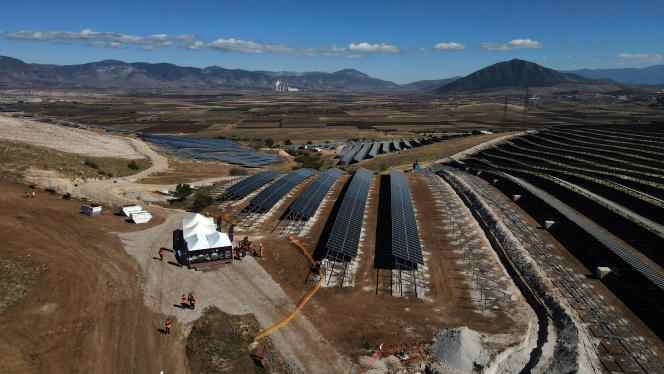In the valley of Kozani, in the north of Greece, thick whitish smoke emerges from the imposing chimneys of the five lignite power plants still in operation. The region, dubbed the “Ruhr of the Balkans”, was until recently the third largest coal producer in Europe. But West Macedonia has embarked on a green revolution and should definitely say goodbye to lignite in 2028.
“The extraction of this rock has given work to several generations, and has increased the standard of living of the population in the region. Everyone wanted to work for the Public Electricity Company (DEI). But obviously, it is a polluting energy which has had harmful consequences on our environment”notes Moschos Moschou, the president of the union of DEI employees.
The company, which has run the factories since the 1950s, has since been partially privatised. His grandfather and his father were already hired by DEI, and after thirty years of work for this company, the trade unionist with the imposing build finds it difficult to accept the idea of a definitive closure of the power stations. Ten years ago, 7,000 people were hired by DEI. They are only 2,000 CDIs and 1,500 temporary workers. “For those close to retirement age, the shock will be less. But for those in their forties, solutions will have to be found to support their families.sighs Moschos Moschou.
An inevitable closure
Lignite production in the region has reached up to 60 million tons, while this year it should be between 18 million and 20 million tons. A level all the same twice higher than that of 2021 because it was necessary to respond to the energy crisis, caused by the war in Ukraine. “Despite this temporary increase, the plan is still to get rid of lignite in 2028 and to return even in less than two years to lignite not exceeding 10% of the total electricity production in the country, as before the conflict in Ukraine »explains Kostas Skrekas, the Minister of Energy and the Environment. “Before the war in Ukraine, natural gas was 50% cheaper than lignite. Separating from lignite had become obvious and it remains so”, insists the minister. Indeed, keeping its power plants and mines costs DEI 300 million euros per year, in particular due to the carbon tax imposed by the European Union.
For Lefteris Ioannidis, former environmentalist mayor of Kozani between 2014 and 2019, the closure of factories was also inevitable. “But we had to prepare for it beforehand. All sectors depended on lignite production”, he points out. A job at the DEI contributed until recently to three jobs created in the local economy. “Since the 1950s, the inhabitants have abandoned the fields and other sectors. Until 2019, lignite production contributed to 40% of the region’s GDP. It is therefore obvious that stopping this activity has dramatic socio-economic consequences.notes Anastasios Sidiropoulos, the head of the Regional Development Agency (ANKO). Unemployment reached 19.7% in the second quarter of 2022, the highest rate in Greece. Between 2015 and 2020, the region even lost 11,750 inhabitants, according to the Greek statistics authority (Elstat).
You have 68.92% of this article left to read. The following is for subscribers only.
